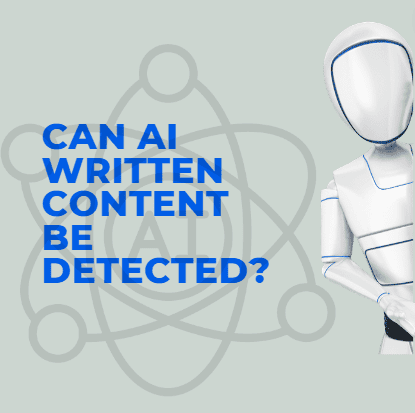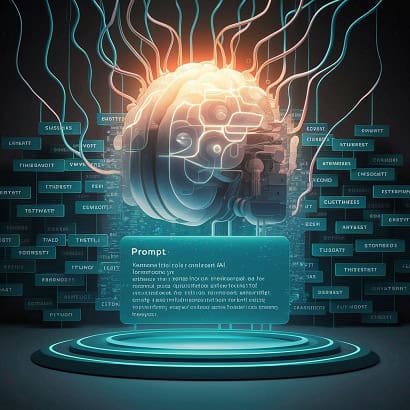Can AI Written Content Be Detected? Unveiling the Truth Behind AI-Generated Texts

Can we genuinely differentiate human-crafted pieces from those generated by AI? This article will try to answer the question; ”Can AI Written Content be detected?”
The Challenge of Detecting AI-Generated Text
Detecting AI-generated text is a big challenge due to the evolving nature of large language models (LLMs). As AI language models continue to improve, it becomes increasingly difficult to differentiate between human and AI-written content.
These models are designed to generate fluent and human-like text, mimicking the writing style of humans.
Muhammad Abdul-Mageed, a professor specializing in natural language processing and machine learning, explains that AI language models aim to create text that cannot be differentiated from human writing.
OpenAI, the leading AI research organization, recognizes the need for text detection and thus, has developed an AI content detector.
However, their current tool is a work in progress and has a detection accuracy of only 26% for AI-written text. Detecting AI-generated content has become an arms race as new AI language models produce more powerful and fluent text, rendering existing detection methods outdated.
Approaches to AI Text Detection
There are several approaches answering the question; can AI written content be detected? Follow us on this section to learn about the two most common methods used in AI detection.
Supervised Classifiers
Supervised classifiers are powerful when getting into AI text detection. These classifiers are trained on labeled text samples that distinguish between AI generated and human written content. OpenAI has developed an AI classifier, which is fine tuned LLM designed for classification.
GPTZero is another great example of an AI classifier. It is based on a logistic regression model that uses perplexity and burstiness as the input parameters. Perplexity measures the probability and unpredictability of a series of words. Burstiness assess the length of a sentence, structure and variation
When the classification models are in use, they predict the probability of text being AI-generated, while the final classification will depend on the decision threshold used. A detector like GPTZero recommends a threshold of 0.65, text that is classified as AI generated will be the one with a probability of 0.65 or higher.
This threshold will be determined by the different content detectors. The choice of threshold influences the trade-off between false positives and false negatives. For instance, at a threshold of 0.65, 85% of AI documents are correctly classified as AI, but on the other hand 1% of human written content are mistakenly classified as AI.
Zero-shot Classification
Zero-shot methods offer an alternative to supervised classifiers by analyzing patterns in the text without requiring training data. These methods rely on calculations such as probability, perplexity, and burstiness to determine the likelihood of text being AI-generated.
These patterns are indicative of AI-generated content. However, as AI language models become more sophisticated, detecting AI-generated text based on patterns becomes increasingly challenging.
Can Ai Written Content be Detected?- Benefits of AI text detection
There are plenty of reasons why we need to detect AI written content. Different fields like digital marketing, law, academia and journalism need the tools for AI content detection. AI produced content can be of high quality but it will be to your advantage if you identified the AI generated content.
Authority Hacker did a survey that showed that 65.8% of people believe that AI content is equal or better than human written content. In another instance, academic researchers are not able to differentiate between these two. AI content detection allows us to examine the efficacy of the content while maintaining human aspects.
It is important to identify the AI content as it helps businesses evaluate whether it is prudent to invest in AI writing tools. When doing some tasks, it will not require human creativity as much. if a business loves the AI generated content and find it well crafted for marketing, then using AI tools would be wise.
How AI Writing Detection Works
AI writing detection relies on reverse engineering language patterns to predict AI-generated text accurately. Machines use algorithms to analyze the context and patterns within a piece of text. Specific patterns align more closely with what AI would generate, increasing the likelihood of the text being AI-written.
The difference between human and AI writing lies in how words are arranged and used. AI models generate text based on vast amounts of data and patterns they have been trained on, while human writing incorporates creativity that AI cannot easily replicate.
Context plays a crucial role in AI detection, as machines excel at identifying commonly used patterns but lack a true understanding of word meanings. Machines can also identify repeated phrases and words, often indicative of automation or copy-pasting.
Although AI content detection tools provide insight into the text’s origin, their accuracy is not error-free. These tools offer predictions rather than definitive answers.
Furthermore, tools that bypass AI detectors, such as Undetectable.AI, pose challenges to accurate detection.
What makes AI text detectable–Detecting AI Content
To detect AI content, you need to identify predictive patterns. There are tools like originality and GLTR which can help you in this process.
GLTR checks personal content in paragraphs. This will analyze the context and visualize any differences in the content. it will help predict whether the content is AI generated or human written. originality will help in checking professional content, industry and academic work. This will detect AI content and plagiarism providing a percentage of whether the content is human written or AI generated.
While the AI writing detectors, it is essential to remember that the results should be interpreted cautiously, as they are predictions rather than definitive judgments.
The Future of AI Writing and Content Detection
No one is certain about the future of AI writing and content detection. More AI writing tools are being developed with more accuracy, ability to crawl the websites and create complex pieces of writing. There are no clear boundaries in AI generated content and human written content. OpenAI is looking into watermarking to show and detect AI generated text which will come in handy when mitigating ethical dilemmas on AI content.
However, detecting AI-written content will become increasingly challenging as language models evolve. The volume of data and generational variability makes AI prediction based on context complex. While grammatical and syntactical cues can aid in AI detection, the true extent of AI detection lies in the ability to analyze extensive blocks of text.
In conclusion, detecting AI-written content remains a complex and evolving field. While advancements in AI text detection tools have been made, detecting such text with absolute certainty is still a challenge.
FAQ
- Can AI written content be detected?
Yes. AI detection tools have been developed to know content generated by AI
- How can AI text detection benefit businesses?
AI text detection can help businesses evaluate the accuracy of AI content and make informed decisions about investing these tools or human writers.
- Can Schools detect AI Writing?
Yes. When teachers use AI detection tools, they will get students using AI content generators to write their essays.
- Does Google detect AI written Content?
Yes. Google can detect your AI written content but will only penalize it if it does not meet user intent and search intent.
- Are there any tools that can bypass AI detection?
Yes, tools can bypass AI detection filters, such as Undetectable AI.
- What makes AI text detectable?
AI detector tools will detect AI written content by analyzing specific characteristics of the text and not by comparing it to its database.






